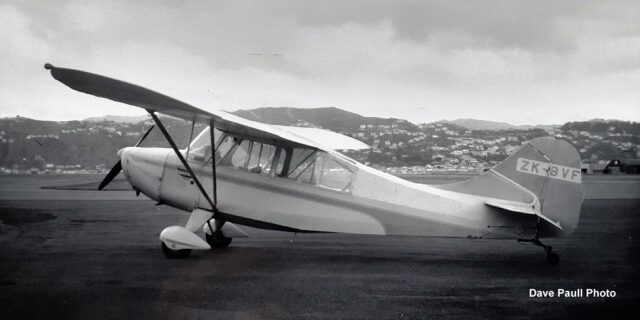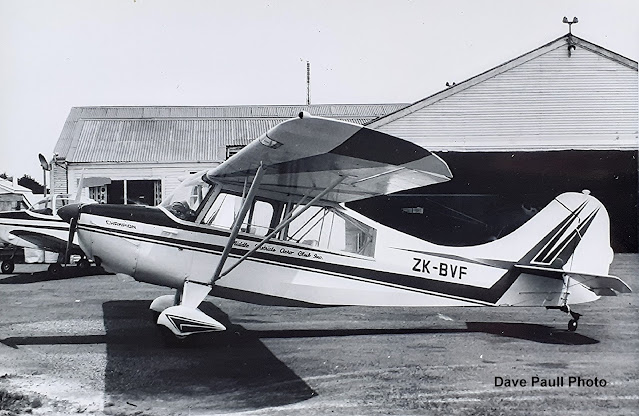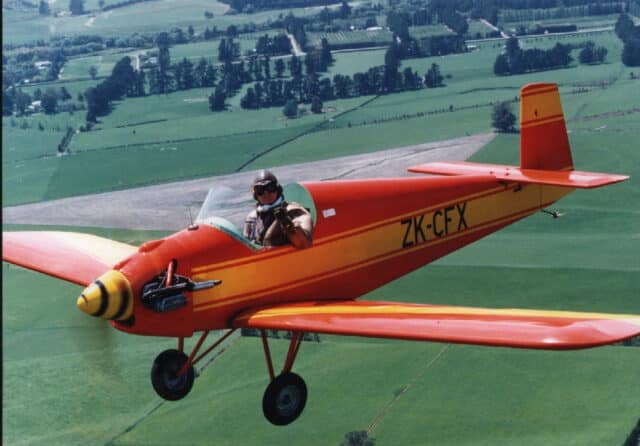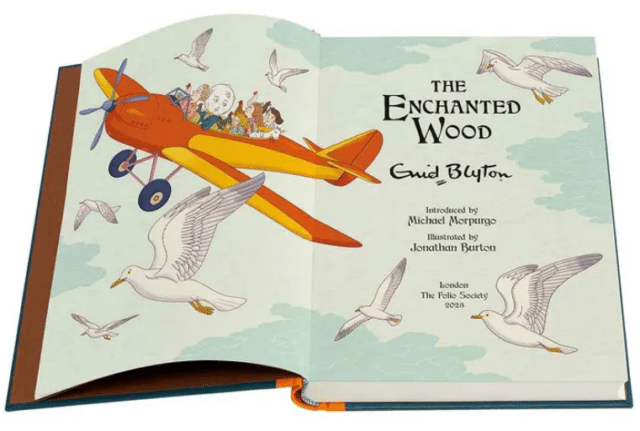Over-The-Top Gun: When Overconfidence Meets Gravity
I’m excited to share this guest post with you, by our own David Provan! It’s a great piece about his early experience flying the Champ.
Over-The-Top Gun
by David Provan
I was eighteen in 1961. I’d not long done my first ever solo flight on an Aeronca Champion 7EC at Middle Districts Aero Club, Palmerston North Airfield, New Zealand. So, of course, I was totally confident and capable of anything – the first of the Most Dangerous Stages of Aviation. Brian Milne, the Chief Instructor, briefed me on the maneuvers he wanted me to practice for my half-hour solo General Flying sortie. Brian was an excellent instructor, despite earning the nickname of “Grumpy”. A half hour a week, costing one pound fifteen shillings, was all I could afford. That was about a quarter of my week’s pay as an RNZAF Aircraftsman Armourer and of course I had a Matchless motorcycle and a girlfriend to support as well. I signed out my little 90 Horsepower Champ, took off on sealed runway 07 after a National Airways Corporation DC3, and departed the circuit to the left over Bunnythorpe in the direction of Feilding.

Dave Paull writes that the Champ was damaged in 1961 but there is no evidence that David Provan was the culprit.
I didn’t, of course, need a wastefully legal 3,000 feet for my maneuvers so did a few well accomplished stalls first at 1,500 feet. Then I decided a few perfect steep turns wouldn’t go amiss. My first was to the left. I was racking the Champ round with an incredible amount of “G” when suddenly the world changed. There was a blur for a second or two and then I was surprised to find the Champ pointing straight downwards and spinning rapidly to the right, at about 1,000 feet. The Champ only had a lap strap so I was hanging against that, uncomfortably, with my left hand supporting me on the instrument panel coaming. I worked out later that I had been turning way too steeply and hard, holding a heap of top rudder to keep the nose up, so she flicked over the top when the wing let go.
The Champ wasn’t cleared for spinning, so I’d never even been shown one. At this point I remembered a hand drawn poster on the wall of the Clubhouse, just opposite the office counter. This was designed for those flying the Club’s Tiger Moth, which was cleared for aerobatics. In a series of bullet points illustrated by very neat sketches of a Tiger in odd attitudes it gave the approved techniques for spin recovery.

So I followed the procedures, one by one:
- Throttle closed
- Controls centred
- Full opposite rudder
- Stick forward till the spinning stops
- Recover from ensuing dive and apply power
It worked! The rotation stopped smoothly and I was in a straight dive, sitting back in my seat! I don’t think I was all that low when I “recovered from ensuing dive”, as my altitude was definitely above the treetops. The rest of my sortie went uneventfully, as briefed, at 3,000 feet. I didn’t mention spinning during my post-flight debrief with Brian.
I’d like to say I learnt about flying from that, but maybe I only learnt to read anything about aviation that came to hand. Still, that’s better than nothing.
A special thank you to David for the story and also for sourcing the images of the Champ at the flying school.
I suppose we are lucky to still have David with us! I hope you’ll forgive me for giving a bit more context to the story. David purchased this gorgeous Druine D.31 Turbulent in 1980.

Dave Paull, who allowed us to use his photographs, has a great page on the history of the Champion 7EC Traveller Deluxe ZK-BVF. This poor Champ was repeatedly damaged and Dave Paull seemed to have found it falling to pieces in a shed at Kairanga in 2004.

However, things were not as they seemed! I won’t give away the details, but I will say it has a happy ending in Palmsterston North!
One last postscript: After David sent me the picture of him in his Turbulent, he spotted this illustration which is used in the Folio Society edition of Enid Blyton’s The Enchanted Wood.

It sure looks like ZK-CFX to me! David agrees that it looks right, including the stopped prop (he had three engine-off landings in his!).
If you enjoyed this excursion with David Provan as much as I did, please let him know in the comments!








Ahhh… when you don’t know enough so that you know you don’t know enough. Applies to computers, motorcycles, engines, and everything else.
Thank you, Mr Provan, and I’m glad you’re still with us!
The Champ was a better aircraft than the Cub in many ways. All-round better performance with the same engine, more room in the cockpit, and a softer, shock absorbing undercarriage.
However, that undercarriage was a bit fragile. Running over a rabbit hole in the grass would break it, which is what I think happened to BVF in ’61.
And no, Sylvia, I wasn’t the one flying it!
Loud cheers for remembering in an emergency something you’d only read about; getting the steps right in a crisis without practice is not easy.